Wild & Ancient Britain With Ireland
Faroe Islands Highlights
Last modified:
In spite of having received a pre-trip "culture gram" about these self-governing Danish islands, I had no particular expectations. For that reason I shouldn't have any basis for saying that I was surprised by what we saw ... but I was. The language, for instance, I had vaguely expected to be Danish, but it is actually Faroese, which is more aligned with Icelandic and Norwegian. After all the sheep we had seen on our travels, I surely expected sheep ... but not exactly these unusual sheep. After visiting so many remote communities that were hanging by a thread, I was was delighted to see a diversified and thriving island economy. Our entire stay was one pleasant surprise after another -- including the beautiful weather. And the food!
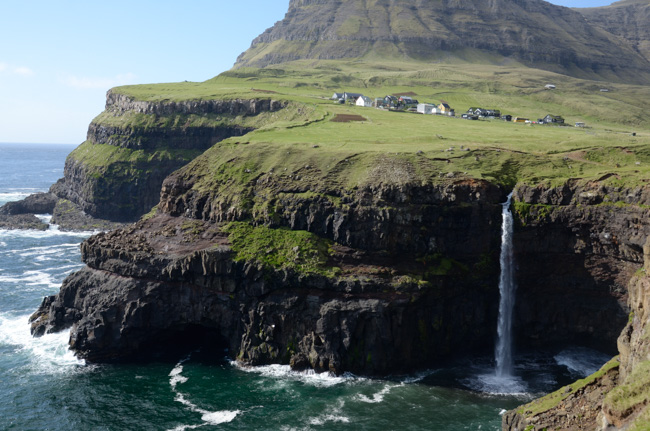
The Faroe Islands airport is located on Vágar Island, so before proceeding to our hotel, on a different island, we visited some local sights. The long hours of daylight gave us plenty of time.
The village beyond the waterfall, Gásadalur, was isolated from the rest of the island until 2004 when a tunnel was built through the ridge separating it from "civilization." Until then the only access was a footpath up & over the mountains.
The waterfall, Múlafossur, was the most dramatic of the many that we saw.
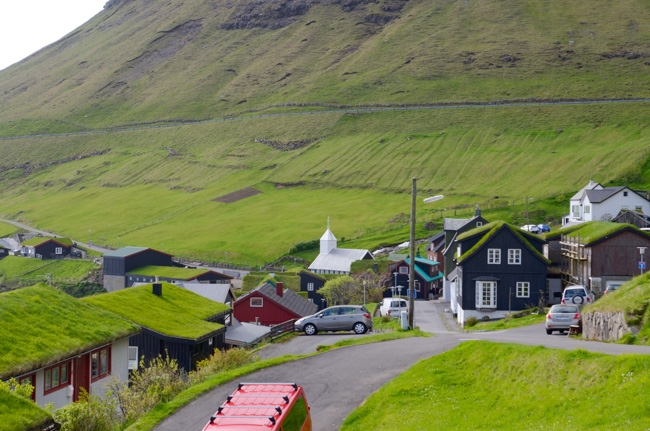
The village of Bøur was typical of the Faroe villages. The turf roofs are very common even in the larger towns. We were told that they provided excellent insulation and would last 70-80 years if properly maintained. Proper care includes occasional watering if there is inadequate rain, and keeping the grass trimmed -- either with weedwhackers or simply putting a lamb on the roof for a while! Most of the roofs we saw were well-maintained, but we never saw a lamb on a roof.
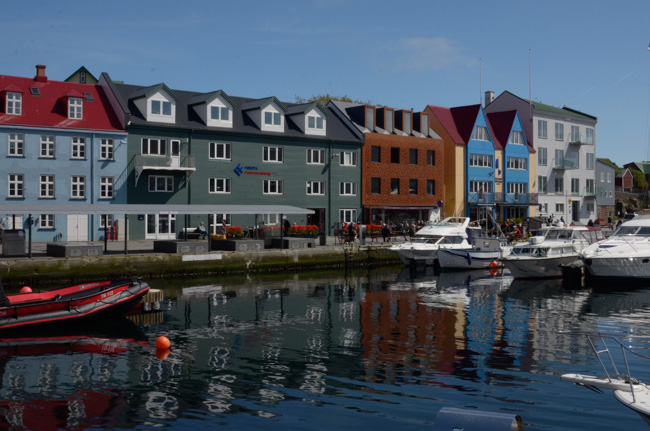
The next morning's adventure was a speedboat ride from Tórshavn around the neighboring island of Nólsoy. We saw spectacular bird cliffs (more puffins!) and had a fabulous lunch.
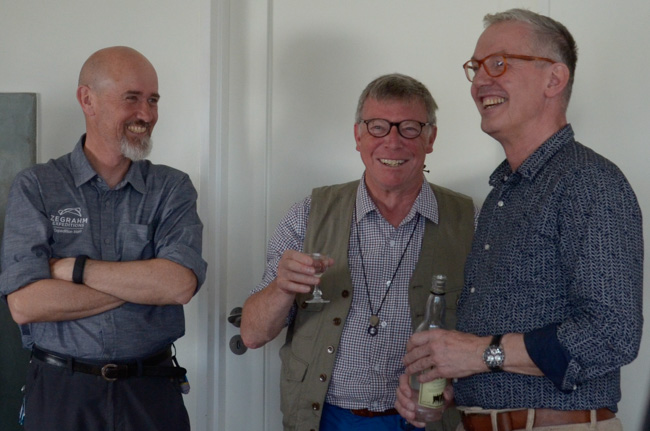
Did I mention the fabulous food? That evening a local farmer and his wife welcomed us for a many-course traditional dinner. Our hosts paired the courses with a variety of beers made from their own brewery. Our guides Jim Wilson (L) and Tom Sharpe are shown with the host Óli (R). We have traveled with Jim & Tom before are were happy to hear that they would be included in the staff for this expedition. We were even more thrilled to learn that they would lead this extension.
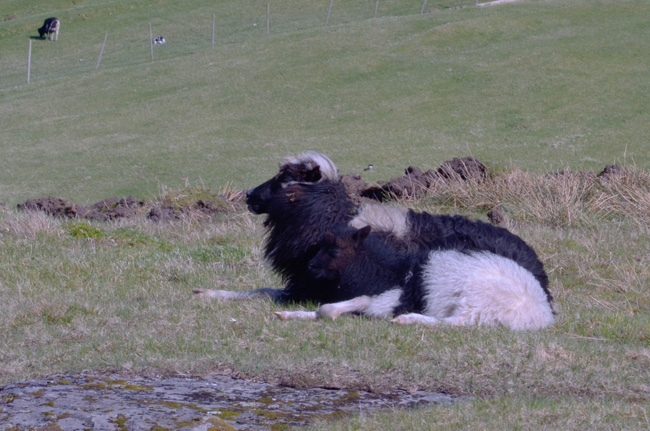
The following morning we were on our way to yet another island in the archipelago. The striking sheep are a unique breed and are featured on the Island's official coat of arms. This ewe and her lamb blend together into an eye-boggling combination.
Sheepskins are sold just about everywhere and I fell prey to a lovely pelt of grey, buff and brown. The wool is long and straight rather than curly and crimped.
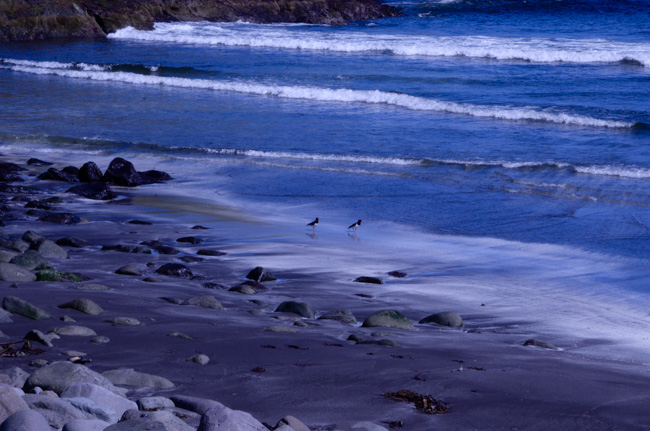
The oystercatcher is the official bird of the islands. A monument in the Torshavn harbor depicts an oystercatcher attacking a raven -- an allegory of the Faroese rejecting the various attempts to control and exploit them. More on that in the detailed pages.
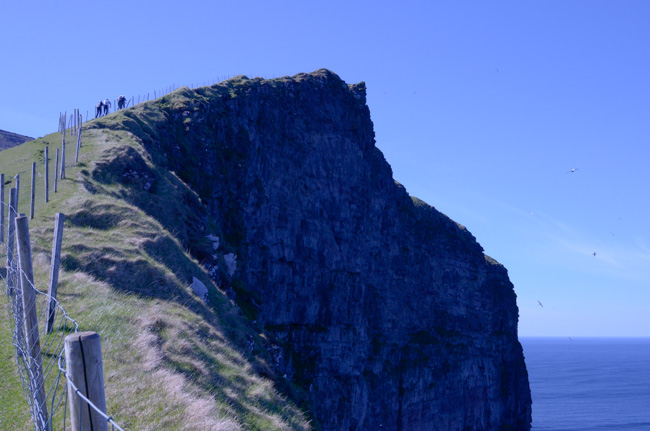
Our final "long walk" of the trip was along these towering cliffs above the village of Gjógv. The picture cannot show the fierce winds that I feared would hurl us all through the flimsy-looking fence and over the cliff for a disastrous plunge into the sea far below. We all survived.
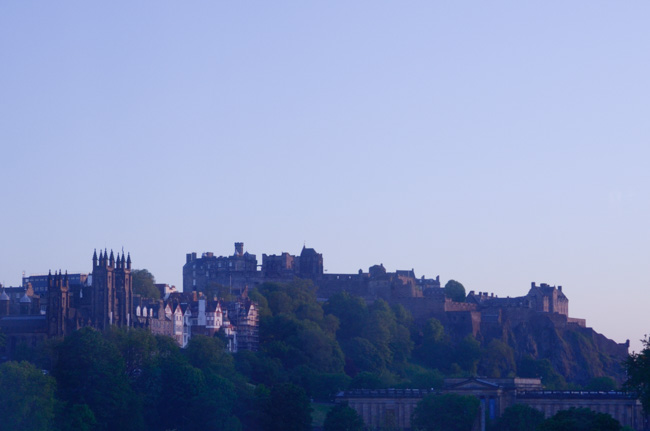
The next morning we bade farewell to the Faroe Islands and returned to Edinburgh. I was pleased to be reunited with my fiddle, which I had left in the care of the hotel in Edinburgh. In honor of that hotel, The Balmoral, I'm adding the tune Balmoral Castle to my practice list.
That evening I summoned up the gumption to make my first solo performance! As our band of travellers gathered for the final dinner at the hotel, I played a selection of Scottish tunes. They all said that they enjoyed it and I choose to believe them.
What a great trip!
Click your "back" button to return to the previous page or click for our picture album.